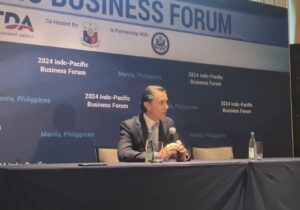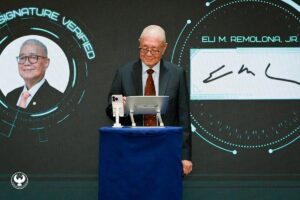
Introduction: Strengthening Economic Ties
The United States and the Philippines are intensifying their collaborative efforts to develop critical infrastructure projects under the Luzon Economic Corridor initiative. This strategic partnership aims to enhance economic connectivity and development across key regions in Luzon, boosting both countries’ economic ties and regional influence.
Identifying Key Projects
During the Indo-Pacific Business Forum in Taguig City, Amos Hochstein, Deputy Assistant to US President Joe Biden, outlined the ongoing efforts to pinpoint specific infrastructure projects for the Luzon Economic Corridor. These projects will include significant developments in Batangas and Subic Bay, focusing on connecting these areas with Clark, Manila, and other key locations via a robust freight rail system.
Strategic Infrastructure Development
The Luzon Economic Corridor is envisioned to be a comprehensive network that integrates high-impact infrastructure such as ports, railways, clean energy solutions, and semiconductor supply chains. This initiative aims to create a seamless connectivity framework that enhances the movement of goods and services, bolstering the region’s economic dynamism.
Trilateral Support and Investment
The initiative was highlighted at the recent Trilateral Leaders’ Summit in Washington DC, where the leaders of the US, the Philippines, and Japan expressed their commitment to this development. This collaborative effort underscores the importance of multi-national support in achieving large-scale infrastructure improvements.
Economic Impact and Vision
President Ferdinand Marcos Jr. emphasized the strategic importance of upgrading Luzon’s infrastructure. As the northernmost and largest island in the Philippines, Luzon hosts a significant portion of the country’s export manufacturing and high-technology industries. The infrastructure projects under the Luzon Economic Corridor are expected to create vital connections between Subic, Clark, and the CALABARZON region, enhancing freight transport services and mobility.
US Commitment and Feasibility Studies
The US has pledged robust support for these infrastructure projects. Hochstein mentioned that the United States Trade and Development Agency, along with other multilateral agencies, are ready to back the Philippines’ efforts. The initial phase involves conducting feasibility studies to identify the necessary developments, followed by accelerated processes to award contracts based on these findings.
US International Development Finance Corporation’s Role
Nisha Diwal, Deputy Chief Executive Officer of the US International Development Finance Corporation, expressed strong interest in the Luzon Economic Corridor. The corporation is actively seeking projects within the Philippines to invest in, aligning with their mission to promote economic growth and development.
President Marcos’ Vision for Luzon
In his remarks, President Marcos highlighted the pivotal role of Luzon in the country’s economy. He pointed out that the projects under the Luzon Economic Corridor will enhance the region’s status as a hub for export manufacturing and high-technology industries. These developments are expected to improve business continuity and position the Philippines as a key player in agribusiness and logistics within the Asia-Pacific region.
Conclusion: A Future-Forward Partnership
The collaboration between the US and the Philippines on the Luzon Economic Corridor represents a significant step towards enhanced economic integration and development. By focusing on strategic infrastructure projects, both nations aim to create a more interconnected and resilient economic landscape, fostering growth and stability in the region.





















Comments are closed for this article!